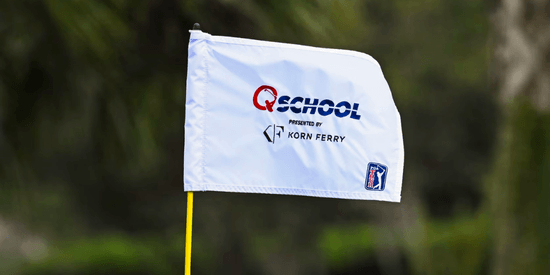ANWA viewing guide: Play will inspire, storylines will stick
4/5/2019 | by Julie Williams of AmateurGolf.com
see also: Augusta National Women’s Amateur Championship, Augusta National Golf Club

If you're new to women's amateur golf, then these few points will help you get the most out of Saturday's broadcast from Augusta
For the newcomers to this arena, here are a few things to look for in that final round.
Hall of Famer Nancy Lopez redirected traffic under the iconic tree behind the Augusta National clubhouse on Friday afternoon. As she strolled toward the pro shop, a sea of TV cameras and reporters flowed behind her, as if she had magnetic pull. It was comical and powerful at the same time.
It was chilling to watch the four hold court on Friday, so be prepared for that image on Saturday.
“I will confess, I will be a little nervous” Lopez said of her shot. “I probably won't sleep, either. But it's just exciting to be a part of history. Tomorrow will be a day of history for us, for the amateurs that are here and for Augusta National.”
The only thing that tripped up the four godmothers was an attempt to pin them down on Saturday’s scoring. Asked what they thought the low final-round score would be, they hesitated.
Conditions and pin placements play a big role, as Sorenstam and Ochoa acknowledged, but ultimately Sorenstam had the best thought about why it is so hard to pin down a number.
“They have nothing really to compare it with,” she said. “If you think (about it), it's the first competitive women's event here, so they are setting the bar.”
Final-round tee times at Augusta National
Arkansas senior Maria Fassi, for one, can hit every par 5 in two, as she learned over the course of Friday’s practice round. (In fact, she found herself hitting either a 6-iron or a 4-iron into the long holes.) Arizona State junior Olivia Mehaffey is in the same boat.
Like all the Arizona State players, Mehaffey had some pre-tournament insight into the course from former men’s coach Tim Mickelson. Part of the message was that on some holes, par is an OK score.
She plans to re-read Mickelson’s notes this evening now that she has seen the place. Mehaffey would understandably take as many practice rounds as Augusta would be willing to give her. Unfamiliarity may play a role in Saturday’s scores.
“Nobody really knows this golf course and the more you play it, the more you like it,” she said. “Tim mentioned the rookies always struggle here.”
Texas sophomore Kaitlyn Papp has seen the course at least one more time than most players.
“This is my second time playing Augusta, and both times, the undulation of the greens was so shocking but also makes it pretty fun,” she said. “You have to use your creativity and imagination to try and make the best putts you can make.”
Forever in the history book. #ANWAgolf pic.twitter.com/ng3aHyBihn
— Augusta National Women's Amateur (@anwagolf) April 5, 2019
Maybe one of the most exciting elements of Augusta National, as seen annually in the final round of the Masters, is that there are scoring opportunities over the back nine. You’ve got to play to win, and that could happen tomorrow in the last few pairings.
Jennifer Kupcho leads at 5 under, but Maria Fassi is right behind her at 4 under. They’re two of the longest players in this field, two of the most experienced and two who already have their future relatively sorted out. Both locked up an LPGA card at the eight-round LPGA Q-Series in the fall.
As it stands, Fassi has to play at least a little offense, but said she won’t focus on Kupcho’s play. Fassi really doesn’t have to go out of her way to do that. She is naturally aggressive.
“That's the way I play golf, and I don't think I should change it,” she said. “Of course, I'll be smart on some of the holes. Just play my game as much as I can.”
Many viewers will tune in on Saturday to see Augusta National, but over the course of the three-hour broadcast on NBC (noon-3 p.m. eastern), they’ll hear a lot of backstories on the 30 players left in the field. Ultimately, that’s the area in which players have the most opportunity to leave a mark.
Many of the players who have longevity on the LPGA have a story, and they tell it in a compelling way. Think Stacy Lewis overcoming scoliosis and Lizette Salas making opportunities for herself when there were none.
A story is a way to remember a player.
Take, for instance, Thursday’s playoff. Ainhoa Olarra became a hero when she jarred a 25-footer for birdie on the second extra hole. If her sheer enthusiasm wasn’t enough to win over the crowd, then the remarks she made on camera were.
Olarra grew up in Spain playing against and rooming with Celia Barquin Arozamena, the former Iowa State player who was tragically killed last fall. Olarra’s story of feeling Barquin Arozamena’s presence this week was chilling. It was a window into knowing what makes Barquin Arozamena tick – what she is playing for.
Another player in this field, Haley Moore, has developed a following as the player who holed a gutsy winning putt for Arizona at last spring’s NCAA finals. Shortly after, she recounted to Golfweek magazine how she had been bullied as a girl, and how it drove her to succeed.
That story resurfaced this week, and gave many fans – especially young ones – a connection point with Moore. Knowing that possibility didn’t make it any easier for Moore to share the story, but in the end, she’s glad she did.
“It definitely felt very weird talking about that story because it happened so long ago,” Moore said Friday. “I tried to get it out of my head and out of my mind because I don’t want to be distracted. I knew that if I told the story, it would affect people that can come back from it (bullying).”
And as for Jennifer Kupcho, the first- and second-round lead brought plenty of media requests. The communications department at Wake Forest had explained to her before this week that the ANWA would present more of that type of attention than she’s ever fielded. She was the first player off the golf course during Friday’s practice round, and the media scrum waiting for her had a Masters-esque density.
“It’s a lot of social skills,” Kupcho said earlier in the week.
Asked what she wanted viewers to understand about women’s golf by the end of Saturday’s broadcast, Olivia Mehaffey replied quickly, “How strong it is.” She watched the LPGA Founders Cup on-site last month, and implored Arizona State’s men’s golfers to come out with her, too.
"The standard of golf is amazing. . . . They’re going to hit wedge shots better than you hit wedge shots and they’re going to hole more putts than you hole,” she told them.
Mehaffey then pointed out that Saturday’s broadcast will have as large a reach as you can get for an amateur sport, let alone amateur golf.
“That’s where the sport is going and it shows how strong it is right now.”
About the Augusta National Women's Amateur (ANWA)

54-hole stroke-play tournament that will include a 72 player international field. The field will include winners of other recognized tournaments while also utilizing the Women's World Amateur Golf Rankings. The first two rounds will be played at Cham...
Most Popular Articles

2025 PGA TOUR Q-School Guide: Sites, Scores, and Who Advanced
Dec 5, 2025Second Stage is complete and Final Stage awaits at Sawgrass — follow every Q-School leaderboard and the players still chasing
2025 LPGA TOUR Q-Series: Final Qualifying Stage FINAL SCORING
Dec 8, 2025Helen Briem earns medalist honors, 31 players headed to the LPGA next year
Australian Open at Royal Melbourne: Preview, amateur bios, and how to watch
Nov 30, 2025Rory McIlroy headlines one of the championship's top fields in years - at least four amateurs will have their chance at glory
Luke Ringkamp Cruises to Rolex Tournament of Champions Title at TPC San Antonio
Nov 26, 2025One week after committing to Pepperdine, Luke Ringkamp won the Rolex Tournament of Champions by nine shots.Inside Gil Hanse’s Restoration of Baltusrol’s Upper Course: A Return to Tillinghast’s
Dec 11, 2025Renowned architect Gil Hanse reveals how he brought Baltusrol’s Upper Course back to life by honoring A.W. Tillinghast’s original
